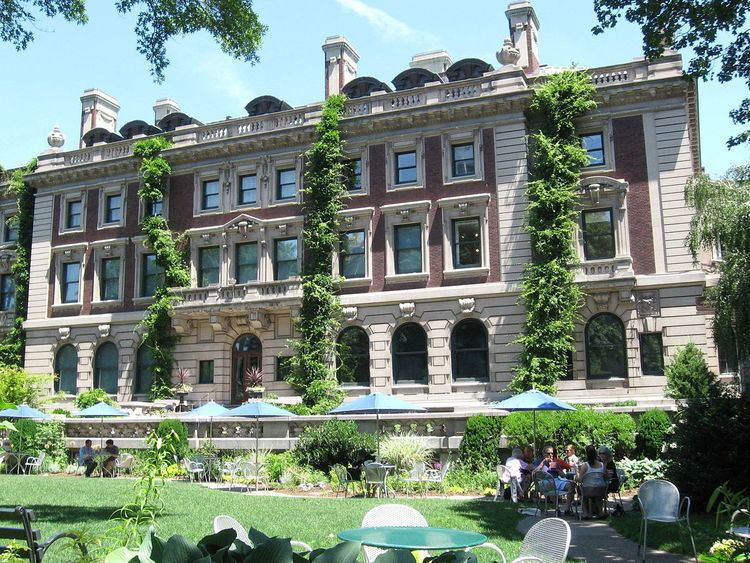Area 1.2 acres (0.49 ha) NRHP Reference # 66000536 Designated NHL November 13, 1966 Phone +1 212-849-8400 | Built 1899–1902 Added to NRHP November 13, 1966 Opened 1976 Architect James Polshek | |
 | ||
Address 2 E 91st St, New York, NY 10128, USA Architectural styles Colonial Revival architecture, Georgian architecture Similar Cooper Hewitt - Smithsoni, Smithsonian Institution, Vanderbilt houses, Cornelius Vanderbilt II House, Charles M Schwab House | ||
Andrew carnegie mansion in nyc cooper hewitt inner office quotes on upper wall
The Andrew Carnegie Mansion is located at 2 East 91st Street at Fifth Avenue in Manhattan, New York City, New York. Andrew Carnegie built his mansion in 1903 and lived there until his death in 1919; his wife, Louise, lived there until her death in 1946. The building is now the Cooper-Hewitt, National Design Museum, part of the Smithsonian Institution. The surrounding neighborhood on Manhattan's Upper East Side has come to be called Carnegie Hill. The mansion was named a National Historic Landmark in 1966.
Contents
- Andrew carnegie mansion in nyc cooper hewitt inner office quotes on upper wall
- Andrew carnegie mansion in nyc cooper hewitt quotes in office on upper wall
- History
- References
Andrew carnegie mansion in nyc cooper hewitt quotes in office on upper wall
History
The land was purchased in 1898 in secrecy by Carnegie, further north than most mansions, in part to ensure there was enough space for a garden. He asked his architects Babb, Cook & Willard for the "most modest, plainest, and most roomy house in New York". However, it was also the first American residence to have a steel frame and among the first to have a private Otis Elevator and central heating. His wife, Louise, lived in the house until she died in 1946.
The Carnegie Corporation gave the house and property to the Smithsonian in 1972, and the modern incarnation of the Cooper-Hewitt Museum opened there in 1976. Hardy Holzman Pfeiffer Associates handled the renovation into a museum in 1977. The interior was redesigned by the architectural firm, Polshek and Partners, headed by James Polshek, in 2001.
The mansion was used in the 1973 musical film Godspell for the number Turn Back, O Man.
